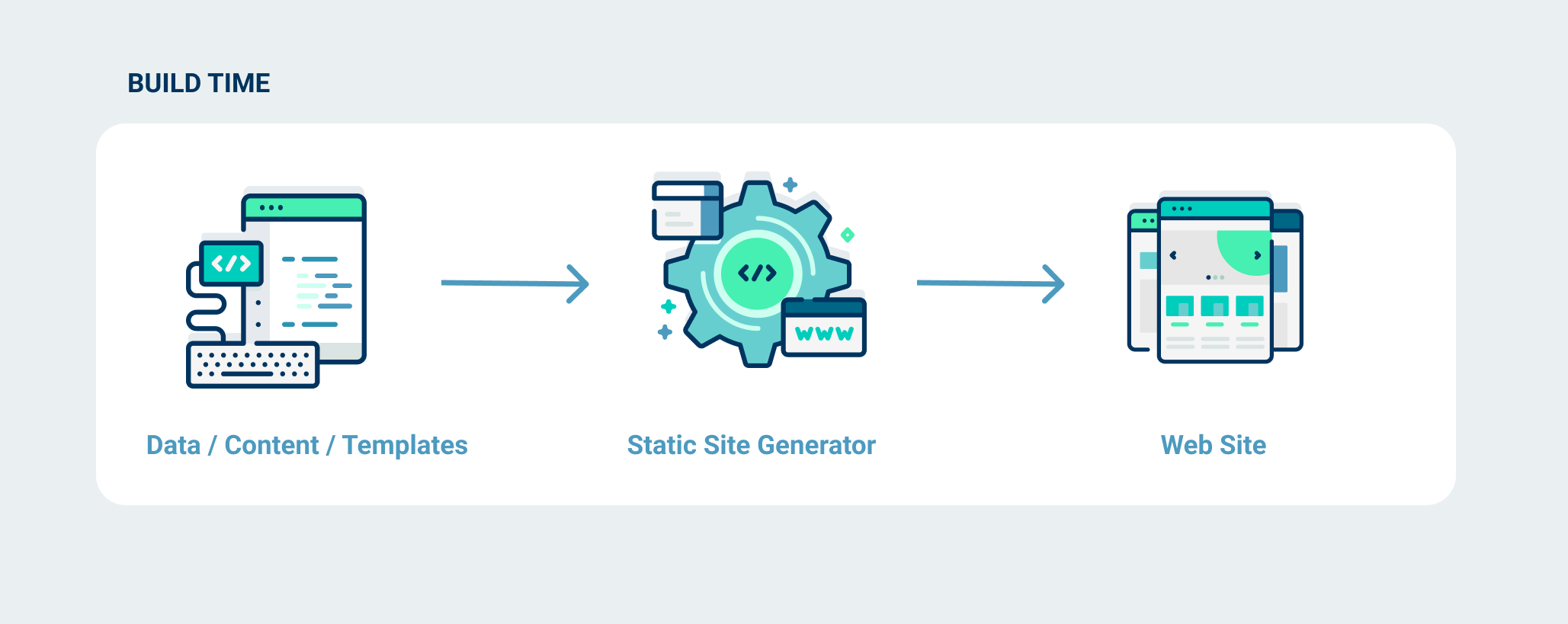In the early days of the web, most websites were simple static HTML pages that were served directly from a web server to the user's browser. As the web grew in complexity, however, developers began to rely on server-side technologies like PHP, Ruby on Rails, and Node.js to build dynamic websites that could process user input, connect to databases, and generate content on the fly.
While these technologies have many benefits, they also come with some downsides, including increased complexity, security risks, and slower page load times. In recent years, a new generation of web developers has turned to static site generators as a simpler, faster, and more secure alternative to traditional dynamic websites.
What is a Static Site Generator (SSG)?
A static site is essentialy a website, that when is served, is rendered/loaded with the same HTML elements every time. It's in contrast to dynamic sites where a webpage may load differently depending on the content.
A static site generator is a tool that generates a website made up of static HTML, CSS, and JavaScript.
They are commonly used for static content-heavy websites like blogs, though Many businesses are switching to SSG due its fast loading times and budget-friendly alternative.
How do Static Site Generators work?
Static site generators work by taking the content from various sources like markdown files, media files, a content management system (CMS) and using them to create a static website that consists of HTML, CSS, and JavaScript files.
Typically, this is how SSG work:
- Content Creation: Content creators write the content in a markup language such as Markdown or in a CMS.
- Template Creation: Developers create templates which defined the structure and layout of the website.
- Static Site Generation: The static site generator reads the content files and the templates, and generates static HTML files for each page of the website.
- Deployment: The generated HTML files are then deployed to a web server, a content delivery network (CDN), or a hosting service like GitHub Pages or Netlify.
- Website Delivery: When a user requests a page from the website, the server delivers the corresponding HTML file directly to the user's browser, without any server-side processing. This results in faster page load times and lower server load.
Benefits of Static Site Generators
Static site generators come with many benefits, especially for non-dynamic sites e.g. blog sites, brochures and landing pages. Static Site Generators do the 'heavy-lifting' for both, developers and content creators - it decouples the content creation from the code.
Some of the benefits that SSGs provide are:
- Speed: Static sites are incredibly fast because they are delivered directly to the user's browser without any server-side processing. This results in faster page load times, which can improve user experience and search engine rankings.
- Simplicity: Static sites are easier to develop and maintain because they don't require a server-side language or a database. In the case of opting for a CMS, the CMS provider usually takes care of the database side. This means there are fewer components to manage, reducing the risk of errors and making it easier to troubleshoot issues.
- Security: Static sites are more secure than dynamic sites because they have no server-side code to exploit. This means there is no risk of SQL injections, cross-site scripting (XSS), or other common attacks.
When not to use a Static Site Generator
While static site generators have many benefits, there are some cases where they may not be the best solution. Here are some situations where you may not want to use a static site generator:
- Dynamic content: If your website relies heavily on dynamic content, such as user-generated content or real-time updates, then a static site generator may not be the best solution. While some static site generators can handle dynamic content, they often require additional setup and customization.
- Complex interactions: If your website requires complex interactions, such as user authentication, or a complex e-commerce site then a static site generator may not be the best solution. Again, while some static site generators can handle these types of interactions, they often require additional setup and customization.
- Large websites: If a website is very large, with hundreds or thousands of pages, then a static site generator may not be the best solution. While static site generators can handle large websites, they can increase build times, become unwieldy and difficult to manage if the site grows too large.
Open source generators
There are plenty of free open source static site generators online. Some are language specific and some can be integrated with any language of your like. The most popular ones are:
- Next.js: Next.js is built on top of React and Node.js. It's known for its server-side rendering capabilities and is often used for creating e-commerce websites and other complex applications.
- Gatsby: Gatsby is built on top of React, a popular JavaScript library. It's known for its ability to create fast, interactive websites.
- Hugo: Hugo is a popular static site generator written in Go. It's known for its speed and can generate large websites.
- Jekyll: Jekyll is one of the oldest and most widely used static site generators. It's written in Ruby and is known for its simplicity and ease of use.
- Hexo: Hexo is written in Node.js. It's known for its speed and is often used for creating blogs and documentation sites.
Other popular static site generators include Pelican (Python), Middleman (Ruby), and Eleventy (JavaScript). Ultimately, the choice of static site generator will depend on your specific needs and preferences.
